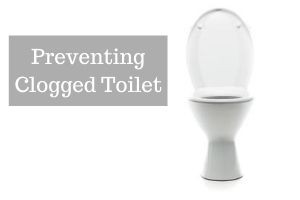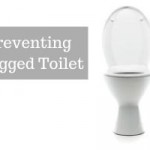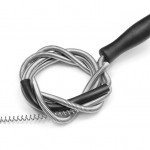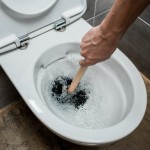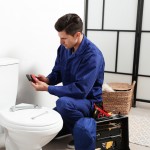
The Best Way to Prevent a Clogged Toilet Drain
What do most people think about clogs? No, not the shoes that slip on and off really easily. What do people think about toilet clogs? Or any plumbing clog? They don’t like them and want to do anything and everything they can do to prevent it from happening. Toilet clogs can be uncomfortable, awkward, and unsanitary to deal with. And it can be especially embarrassing when guests are visiting. So it’s time to put a stop to all of that.
In this article, homeowners can learn about how a toilet drain works, what causes it to clog, and the best ways to prevent that clog from happening.
Breaking Down a Toilet Drain
Toilets are one of those amazing modern-day inventions that have made life a lot simpler. But in order for this mechanism to work properly, all of the many components need to work together. To break down the basics of a toilet’s anatomy, there are two main parts to the toilet: the bowl and the tank.
When the toilet is flushed, the water from the tank rapidly drops into the bowl, which forces the water and waste in the bowl to exit through the toilet drain. There are all kinds of toilets out there of different heights and sizes. But ultimately it boils down to four main types of toilets.
- Two-piece toilets: These are the most common type of toilet, where the tank is created separately from the bowl and only attached during or immediately before the installation.
- One-piece toilets: They look very similar to the two-piece toilets, but the tank and bowl are connected from the start. They are also a bit smaller and sit lower to the ground.
- Wall-hung toilets: Only the toilet bowl is exposed, while the tank hides behind the wall to save space.
- Smart toilets: Because there is a “smart” version of every appliance these days, this toilet has additional technological features like heated seats, automatic flushers, etc.
Causes for Toilet Clogs and How to Remove Them
Clogged toilets are pretty common, and there are many reasons for them. Hair can cause clogs of all kinds, including toilet clogs. Flushing anything other than toilet paper is a clog hazard. In some cases, this is accidental. For instance, if a young kid is playing and drops a toy into the toilet or something falls off of the counter and accidentally gets flushed, the toilet can clog.
If people are purposefully flushing products like floss, wipes, feminine products, cotton balls, q-tips, or other items down the toilet, this is almost guaranteed to lead to a toilet clog too. But even toilet paper can cause clogs if it’s bunched up into a ball that’s too big to fit through the drain.
Most homeowners will start with a plunger to attempt to break up the clog. Though this works in some cases, if the clog is more severe, it’s time to bring in the pros. They’ll typically use a drain snake to grab and remove whatever is clogging the drain.
Preventing Clogged Toilet Drains
The best way to prevent clogged toilets is to be careful of what goes into the toilet, accidental or not. To prevent accidental clogs, it’s best to keep the lid closed. This will stop the toothbrush from falling off the counter into the toilet and will stop the hair flying from the beloved family dog’s after-bath-shakes from going into the toilet and resulting in a clog. Anything other than toilet paper, throw into the trash. And when using a lot of toilet paper, consider a courtesy flush to separate the waste going down the toilet drain.
About Sheely Plumbing Inc.
For over a decade, experts at Sheely Plumbing Inc. have been helping West Michigan overcome all their plumbing issues. Through quality workmanship, exceptional customer service, and competitive pricing, they have become an A+ company with accreditation from the Better Business Bureau.
